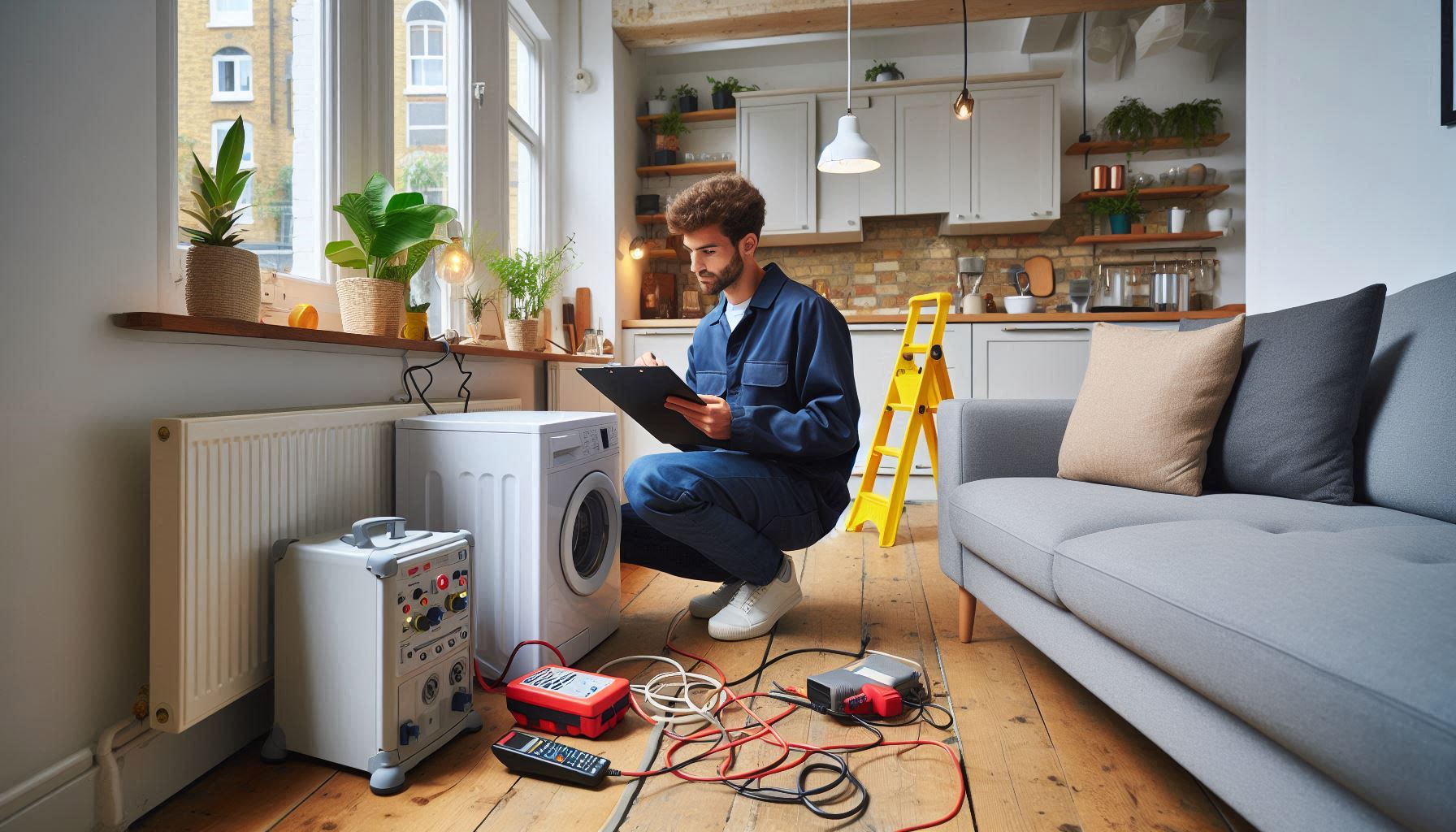
In London’s rental market, landlords must stay on top of landlord electrical requirements to ensure tenant safety and regulatory compliance. Two key processes—EICR and PAT testing—often cause confusion. Which one applies to your property? When should each be done?
In this guide, we’ll explain the essentials of EICR vs PAT testing, highlight what London landlords need to know, and clarify how to meet your legal obligations effectively.
To begin with, an Electrical Installation Condition Report (EICR) is a comprehensive inspection of a property’s fixed electrical systems. A qualified electrician actively checks the wiring, sockets, fuse boards, and electrical accessories to identify any potential risks. Importantly, each issue receives a classification code:
• C1: Immediate danger—urgent action required
• C2: Potentially dangerous—needs attention
• C3: Improvement recommended for safety
According to current landlord electrical requirements in the UK, you must complete an EICR at least every five years—or sooner if the report suggests it. Especially in London, where compliance is critical, this report plays a major role in keeping tenants safe and staying aligned with regulations. Moreover, understanding EICR vs PAT testing helps landlords know exactly what’s inspected during this process.
Meanwhile, Portable Appliance Testing (PAT Testing) involves checking portable, landlord-provided appliances—such as TVs, kettles, laptops, or microwaves. PAT verifies safe operation: the engineer tests cables, plugs, and insulation.
Unlike EICR, PAT testing is not mandated by law. However, landlords should still perform it to verify appliance safety under landlord electrical requirements and reduce risk in their rental properties.
Here’s a helpful comparison of the two:
Feature | EICR | PAT Testing |
Scope | Fixed wiring, consumer units, sockets | Portable, landlord-supplied appliances |
Frequency | Every 5 years (or sooner if recommended) | Not legally mandated; recommended annually or biennially |
Legal Requirement | Required for rented properties in London | Voluntary, but best practice |
Purpose | Check structural wiring safety | Prevent appliance-related hazards |
Tenant Expectation | Ensures property wiring remains safe | Reassures tenants about small appliance safety |
Understanding EICR vs PAT testing is key to meeting landlord electrical requirements in London. While only the EICR is legally required, both types of inspections improve tenant safety.
A valid EICR checks your wiring, sockets, and consumer units to ensure everything meets legal standards. In contrast, PAT testing focuses on portable appliances like kettles or toasters.
Even though PAT isn’t a legal requirement, it helps reduce liability and prevent accidents—especially in furnished rentals.
Moreover, many London insurers favour landlords who perform both. Taking a proactive approach boosts safety and shows professionalism across your properties.

Under UK regulations, landlords must maintain landlord electrical requirements through valid EICR reports. Misunderstanding this—or confusing it with PAT testing—can result in fines, failed inspections, and safety breaches.
In London, several local authorities also enforce stricter electrical compliance—like mandatory EICR in Houses of Multiple Occupation (HMOs), or spot checks for property licensing.
To meet landlord electrical requirements, plan your EICR and PAT testing around tenancy turnovers. This ensures minimal disruption and full readiness for new tenants.
Furthermore, hire NICEIC or NAPIT-certified engineers for legal compliance. Then, switch to digital logs to track certificates and avoid missing deadlines. This also makes it easier to share documents with agents or councils.
Next, reinforcing tenant safety education becomes vital when landlords explain the differences between EICR vs PAT testing to tenants. Clarify:
• EICR checks fixed wiring
• PAT testing checks small appliances
Providing tenants with a summary or leaflet builds trust, reduces queries, and shows you prioritize safety.
Typically, landlords can expect:
• EICR: £150–£250 per property depending on size
• PAT testing: £1–3 per appliance
While PAT costs vary by number and type of items, both costs are minor compared to liability from an electrical incident or legal non-compliance.
Technically, yes. However, even though PAT testing isn’t a legal requirement, skipping it can still put you at risk. If a portable appliance causes harm, insurance companies may dispute your claim. So, as part of responsible landlord electrical requirements, it’s wise to schedule regular PAT testing.
Unlike the Gas Safety Certificate, you’re not legally required to share EICR results with tenants. That said, many landlords in London choose to provide a simple summary. This improves transparency and reassures tenants about the safety of their electrical system.
To meet all landlord electrical requirements, landlords should:
• Book EICR every 5 years (or earlier if flagged)
• Inspect wiring and take action on C1/C2 faults
• Perform PAT testing on appliances you supply
• Communicate both checks clearly to tenants
• Keep digital records of all safety documentation
Understanding EICR vs PAT testing helps London landlords uphold safety, legal compliance, and tenant trust. While the two serve different purposes—EICR for fixed installations and PAT for portable items—they work together to minimize risk.
Ultimately, staying proactive and transparent in your landlord electrical requirements not only keeps you legal—it makes your rental property safer, better managed, and more attractive to responsible tenants.

